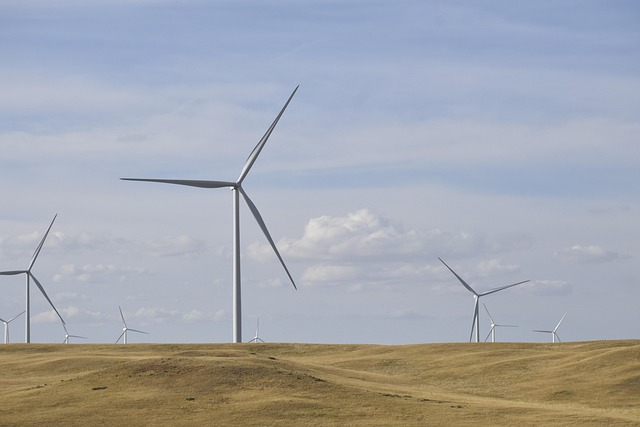When we talk about the future of energy, the word “biofuel” often appears at the forefront of conversations about sustainability and ecological stewardship. Biofuels are energy carriers produced from biological materials—plants, algae, and agricultural residues—that can replace or complement fossil fuels in transportation, heating, and power generation. By integrating biofuels into energy systems, we aim to lower greenhouse gas emissions, reduce dependence on imported oil, and stimulate rural economies. Yet the promise of biofuel is balanced by complex challenges related to land use, biodiversity, and supply chain efficiency. Understanding how biofuels fit into the broader tapestry of green technologies is essential for crafting policies that genuinely move toward carbon‑neutral development.
The Science Behind Biofuel Production
At its core, biofuel production exploits the biochemical pathways that plants use to convert sunlight into chemical energy. Two primary routes dominate the industry: fermentation and transesterification. Fermentation converts sugars extracted from crops into ethanol, while transesterification transforms triglycerides from vegetable oils into biodiesel and glycerol. Both processes rely on catalytic reactions that are typically facilitated by enzymes or heat and pressure, followed by separation and purification steps to yield fuels that meet regulatory standards.
While the chemistry appears straightforward, scaling these processes requires careful optimization of feedstock quality, energy inputs, and waste management. Innovations in metabolic engineering and genetic modification have opened new avenues for producing high‑yield, low‑toxicity feedstocks that can be cultivated on marginal lands, thereby reducing competition with food crops.
Categories of Biofuels and Their Applications
- First‑generation biofuels – Derived from edible crops such as corn, sugarcane, and rapeseed. These fuels are the most widely used but face criticism for potential food‑security conflicts.
- Second‑generation biofuels – Produced from non‑edible biomass, including lignocellulosic residues, algae, and dedicated energy crops. They promise higher yields and lower competition with food supply.
- Third‑generation biofuels – Emerging technologies that use advanced fermentation, electrolysis, or photobiological systems to create fuels directly from sunlight and CO₂, offering the potential for truly net‑zero emissions.
Each generation serves distinct sectors: ethanol fuels blend with gasoline for light‑vehicle use; biodiesel integrates into diesel engines; and advanced bio‑methane can feed into natural gas grids or power plants. The diversity of biofuel types provides flexibility in meeting regional energy demands while aligning with environmental goals.
Carbon Neutrality and Ecological Footprint
One of the most compelling arguments for biofuel is its potential to create a closed carbon cycle. When plants absorb CO₂ during photosynthesis, they store the carbon in their biomass. If that biomass is subsequently combusted in a biofuel engine, the released CO₂ is roughly equal to the amount initially sequestered, provided the life cycle emissions remain minimal. Thus, biofuel can be considered carbon‑neutral when produced and used responsibly.
“The key to achieving true carbon neutrality lies not only in the type of fuel but also in the entire chain of cultivation, harvesting, processing, and combustion.” — Energy Systems Analyst
However, real‑world practices introduce significant variations. Land‑use change, fertilizer runoff, and energy‑intensive processing can erode the net‑benefit. Life‑cycle assessments show that second‑ and third‑generation biofuels typically offer larger emissions reductions than first‑generation counterparts, especially when produced on low‑impact sites and coupled with renewable electricity for processing.
Socio‑Economic Impacts of Biofuel Adoption
Biofuel development can stimulate rural economies by creating jobs in farming, processing, and logistics. Smallholders may gain diversified income streams through crop sales and byproducts such as animal feed or bio‑fertilizers. Moreover, domestic production of biofuel reduces import bills and enhances energy security.
Yet the socio‑economic picture is nuanced. In regions where arable land is scarce, the diversion of crops to fuel production can elevate food prices and create social tensions. Equitable policies that prioritize non‑edible feedstocks and support community‑based biofuel enterprises are crucial for ensuring that the economic benefits are inclusive and sustainable.
Policy Landscape and Market Dynamics
Governments around the world have enacted a mix of incentives, mandates, and standards to encourage biofuel uptake. Feed‑in tariffs, renewable fuel standards, and carbon pricing mechanisms create financial viability for producers and users alike. At the same time, certification schemes such as the Round‑Up Certified System and the International Renewable Energy Certificate program help guarantee that biofuels meet environmental criteria.
- Subsidies and tax credits – Reduce the upfront cost of biofuel production facilities and offset capital expenses.
- Renewable portfolio standards – Mandate a minimum percentage of biofuels in fuel blends, driving demand for compliant products.
- Research and development funding – Supports breakthroughs in second‑generation feedstocks and process efficiencies.
Market dynamics are evolving rapidly. Advances in digital monitoring and blockchain traceability are improving supply‑chain transparency, while the rise of electric vehicles shifts some demand away from liquid fuels. Biofuel’s role in this new ecosystem will depend on continued innovation and alignment with decarbonization pathways.
Future Outlook: Challenges and Opportunities
Looking ahead, biofuel stands at the intersection of technology, policy, and environmental stewardship. Key challenges include:
- Scaling second‑generation production without compromising biodiversity.
- Reducing life‑cycle emissions through cleaner processing technologies.
- Ensuring that supply chains are resilient and inclusive.
Opportunities arise from cross‑sector collaboration. For instance, integrating algae cultivation with wastewater treatment can provide dual benefits: nutrient removal and high‑yield biofuel feedstock. Additionally, coupling biofuel production with carbon capture and storage (CCS) could transform the sector into a net‑negative emitter, surpassing the goal of neutrality.
Ultimately, the success of biofuel as a green technology hinges on a holistic approach that balances ecological integrity, economic viability, and social equity. By embracing innovation and reinforcing supportive policy frameworks, the biofuel industry can become a cornerstone of a carbon‑neutral, sustainable energy future.




